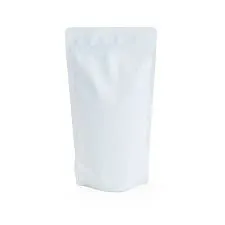- Afrikaans
- Albanian
- Amharic
- Arabic
- Armenian
- Azerbaijani
- Basque
- Belarusian
- Bengali
- Bosnian
- Bulgarian
- Catalan
- Cebuano
- chinese_simplified
- chinese_traditional
- Corsican
- Croatian
- Czech
- Danish
- Dutch
- English
- Esperanto
- Estonian
- Finnish
- French
- Frisian
- Galician
- Georgian
- German
- Greek
- Gujarati
- haitian_creole
- hausa
- hawaiian
- Hebrew
- Hindi
- Miao
- Hungarian
- Icelandic
- igbo
- Indonesian
- irish
- Italian
- Japanese
- Javanese
- Kannada
- kazakh
- Khmer
- Rwandese
- Korean
- Kurdish
- Kyrgyz
- Lao
- Latin
- Latvian
- Lithuanian
- Luxembourgish
- Macedonian
- Malgashi
- Malay
- Malayalam
- Maltese
- Maori
- Marathi
- Mongolian
- Myanmar
- Nepali
- Norwegian
- Norwegian
- Occitan
- Pashto
- Persian
- Polish
- Portuguese
- Punjabi
- Romanian
- Russian
- Samoan
- scottish-gaelic
- Serbian
- Sesotho
- Shona
- Sindhi
- Sinhala
- Slovak
- Slovenian
- Somali
- Spanish
- Sundanese
- Swahili
- Swedish
- Tagalog
- Tajik
- Tamil
- Tatar
- Telugu
- Thai
- Turkish
- Turkmen
- Ukrainian
- Urdu
- Uighur
- Uzbek
- Vietnamese
- Welsh
- Bantu
- Yiddish
- Yoruba
- Zulu
laser cutting polyurethane foam
Laser Cutting Polyurethane Foam Innovations and Applications
In recent years, laser cutting technology has become an essential tool in various industries, particularly for materials like polyurethane foam. Known for its versatility, lightweight properties, and insulation capabilities, polyurethane foam is widely used in sectors such as automotive, furniture, packaging, and even in the production of soundproofing materials. The integration of laser cutting techniques has significantly enhanced the efficiency, precision, and aesthetics of foam designs.
What is Laser Cutting?
Laser cutting involves the use of a high-powered laser beam to cut and engrave materials. The technology operates on a principle where the laser generates heat that melts or vaporizes the material to create clean cuts or intricate designs. Compared to traditional cutting methods, laser cutting offers numerous advantages, including superior accuracy, minimal material waste, and the ability to cut complex shapes with ease.
Advantages of Laser Cutting Polyurethane Foam
1. Precision and Detail One of the primary benefits of laser cutting polyurethane foam is the unparalleled precision it offers. The laser can achieve intricate designs and fine details, making it an ideal choice for applications where aesthetics and accuracy are paramount. This capability is particularly valuable in industries like custom interior design and specialized packaging.
2. Minimal Material Waste Laser cutting is highly efficient in terms of material usage. Traditional cutting methods often result in significant waste due to the need for larger material margins or allowances for blade width. In contrast, laser technology’s ability to cut close to the desired design significantly reduces scrap material, resulting in cost savings and a more environmentally friendly process.
3. Speed and Efficiency The speed of laser cutting reduces production times, allowing for quicker turnaround on projects. This efficiency can be crucial for businesses needing rapid prototyping or production runs, especially in competitive markets where time-to-market can determine success.
4. Versatility Laser cutting can be applied to a variety of foam densities and thicknesses. This versatility enables manufacturers to cater to different market requirements, whether it’s for lightweight packaging solutions or thicker, more robust foam used in automotive applications.
laser cutting polyurethane foam

5. Safety Laser cutting operations typically produce fewer airborne contaminants compared to traditional cutting methods. While safety measures must always be followed, the reduced dust and debris contribute to a cleaner work environment.
Applications of Laser-Cut Polyurethane Foam
The applications for laser-cut polyurethane foam are vast and diverse
- Automotive Industry In the automotive sector, polyurethane foam is used for seats, dashboards, and insulation. Laser cutting allows manufacturers to create custom-fit foam components that improve comfort and performance.
- Packaging Solutions Laser-cut foam inserts provide superior protection for fragile items during shipping and storage. Custom-designed foam packaging not only reduces material waste but also enhances product presentation.
- Furniture Design The design possibilities with laser-cut foam are endless, allowing for unique shapes and patterns that enhance the aesthetics of furniture pieces. Upholstery and accent pieces can benefit from the lightweight yet durable nature of laser-cut foam.
- Soundproofing and Acoustic Treatments Custom soundproofing solutions made from polyurethane foam can be precisely laser-cut to fit specific applications, such as recording studios, home theaters, and commercial spaces.
In conclusion, the combination of laser cutting and polyurethane foam is transforming industries that rely on precision, efficiency, and creativity. As technology continues to advance, it is expected that even more innovative applications will emerge, further showcasing the endless possibilities that laser-cut polyurethane foam can offer. Whether enhancing product functionality or aesthetics, this process is set to remain a cornerstone of modern manufacturing.













